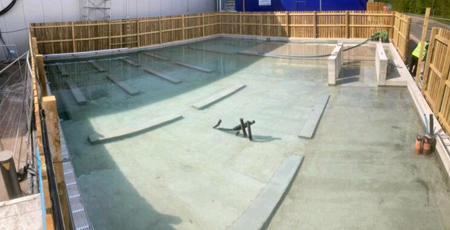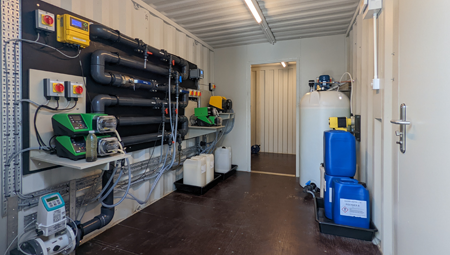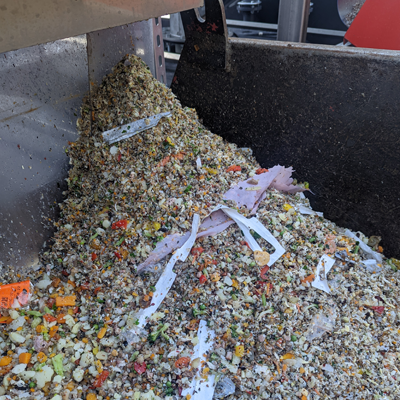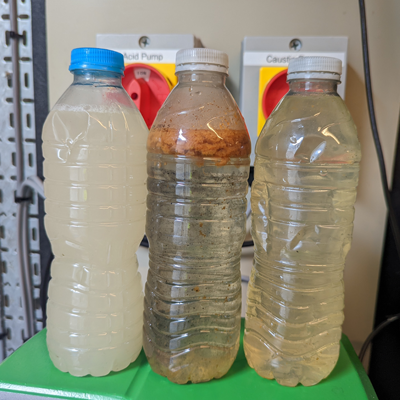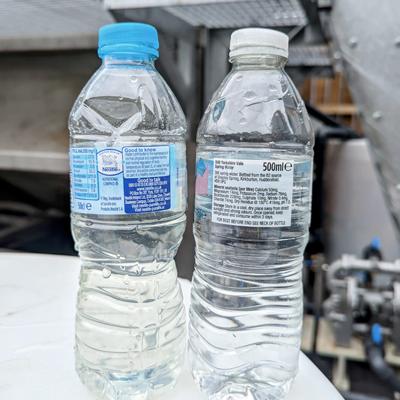Ready Meals & Desserts
Ogden Water have recently completed a full turn-key installation of a dual effluent treatment plant for a major UK manufacturer of ready meals and desserts.
Surprisingly, there was previously no effluent treatment on site at all. However, the local water company were growing increasingly concerned, with results regularly outside of consent and the trade effluent bills were significant, so a solution was vital.
Primary stage
A car park area was designated by site as the location for the new effluent plant, therefore, full civils works were required in order to build suitable bunds and foundations/plinths for the equipment. Two separate bunds were required - one for the main plant and one for chemical storage tanks.
The bunds were both concrete-lined before being water tested and then finally, coated with a specialist, chemical-resistant resin for durability.
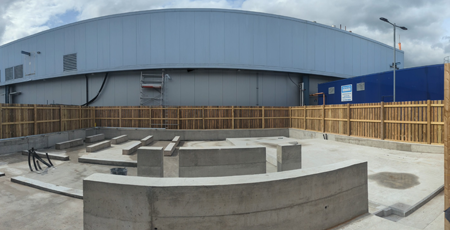 |
| 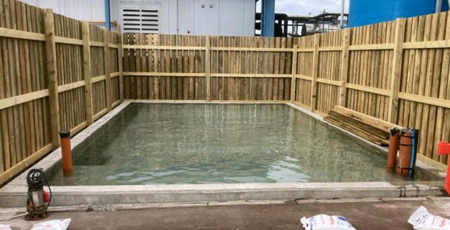 |
Secondary stage
The main effluent plant was then built and assembled in stages, allowing the major pieces of equipment such as tanks, the DAF units and screens to be lifted and positioned before the pumps and pipework were completed.
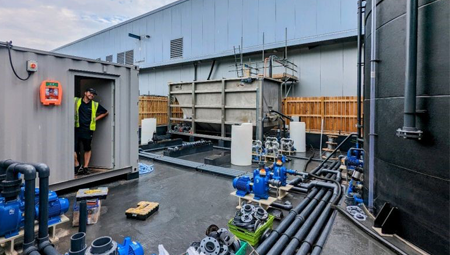 |
|
Process overview
The factory has several main effluent streams, which all converge in a deep reception pit before overflowing to the final drain. The effluent is intercepted at the reception pit and sent to the new treatment plant using heavy duty submersible pumps.
The effluent then follows the path below:
1. Primary screening - rotary drums screens remove any gross solids - i.e. large food pieces, hair nets, tie wraps, labels, etc.
|
2. Balancing - the effluent is pumped into two large balances tank. The tanks are constantly agitated to provide a homogenous effluent for the further treatment processes and prevent anaerobic and septic conditions. The balance tanks also feature coarse pH correction to counteract any large variations from the factory.
3. Chemical treatment - the effluent passes through a chemical dosing system, which includes fully-automated pH correction, coagulant and polymer dosing. This process splits the solids from the base water of the effluent, preparing it for the DAF.
|
4. DAF (dissolved air floatation) - the chemically treated effluent enters the DAF unit, where it is also aerated using specialist pumps. The solids in the effluent rise to the surface of the DAF unit, where they are scraped away into a sludge tank by an automated scraper system. The then clean effluent overflows to sewer, through the water company required flow meter and sampler.
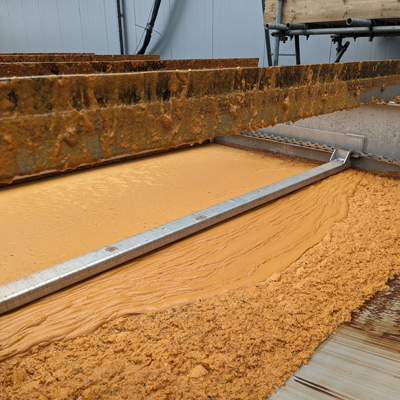 |
|
The system as a whole is heavily automated and duty/standby pump sets are in use where these are considered critical point items.
The site also benefits from full operator training as well as chemical supply and monthly service visits.

